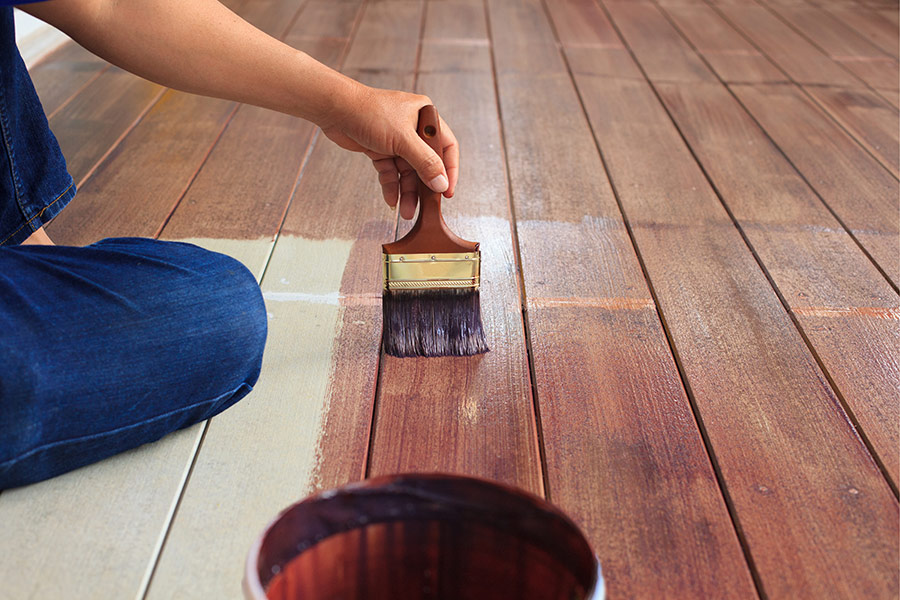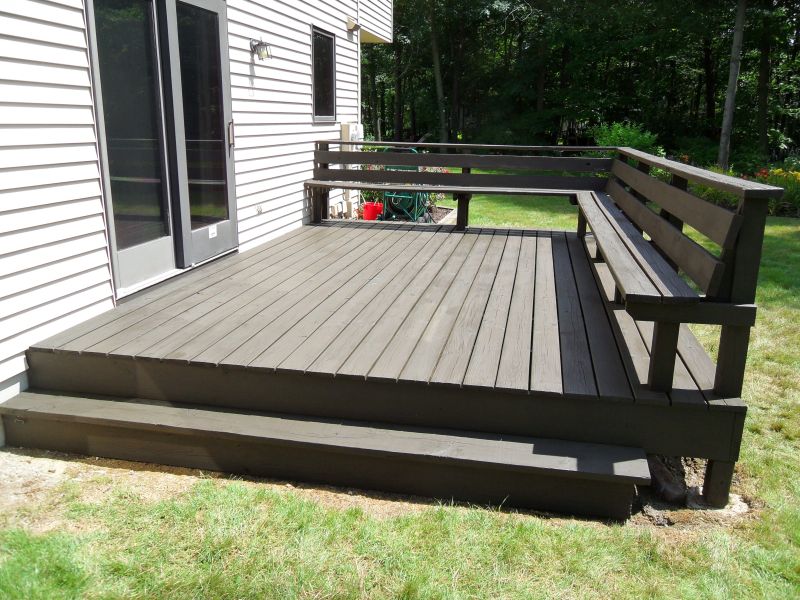Deck Discoloration 101: Whatever You Required to Know for a Do It Yourself Task
When it pertains to boosting the longevity and appearance of your deck, one vital aspect frequently forgot is proper staining. A well-executed deck discoloration project can not only rejuvenate the appearance of your exterior space however additionally secure it from the components for several years ahead. The process includes more than just using a layer of stain. From preparing the deck surface to picking the right kind of tarnish and understanding the application techniques, each step plays a critical duty in achieving a professional finish. Join us as we unwind the essential standards and expert tips for understanding the art of deck discoloration, ensuring a successful DIY job that will certainly leave your deck looking impeccable.
Importance of Deck Staining
Deck discoloration is a necessary upkeep task that protects the durability and appearance of outside wood frameworks. By using a layer of discolor to the deck's surface area, you develop a protective barrier that assists stop dampness penetration, UV damage, and decomposing of the timber.
Additionally, deck discoloration boosts the natural beauty of the wood by highlighting its grain and structure. It gives a chance to tailor the appearance of the deck by selecting from a variety of discolor finishes and shades. Whether you favor a transparent discolor that showcases the timber's all-natural color or a strong discolor that adds a pop of shade, the ideal tarnish can raise the general visual of your outdoor space. Fundamentally, regular deck discoloration is a simple yet efficient means to ensure your deck remains structurally audio and aesthetically pleasing for several years ahead.
Deck Prep Work Steps

After cleansing and fixing, sanding the deck is required to smooth out rough surface areas and open up the wood's pores to better take in the tarnish. As soon as the deck is tidy, completely dry, and smooth, secure any type of neighboring plants, furniture, or surfaces with a decrease cloth prior to using the deck tarnish.
Picking the Right Discoloration
Choosing the proper stain for your deck is a vital choice that directly influences both its appearance and sturdiness. When selecting the ideal tarnish, there are several variables to take into consideration to ensure an effective do it yourself task.
To start with, you require to make a decision between clear, semi-transparent, and solid discolorations. Clear stains allow the natural grain of the wood to show with but offer very little protection versus UV rays and wetness. Semi-transparent stains give a concession in between shade and security, while strong discolorations offer the most defense however cover the timber grain.
Next, think about the type of timber your deck is constructed from, as different spots work better with particular timber species. For redwood, example and cedar decks commonly look ideal with a clear or semi-transparent tarnish to highlight their all-natural charm. Pressure-treated wood might benefit from a strong stain to hide imperfections.
Lastly, variable in the climate in your location. If you experience severe winters or intense sunshine, choose a tarnish with UV protection and resistance to extreme weather. By meticulously considering these elements, you can pick a discolor that improves your deck's aesthetics and long life.

Applying Spot Properly
When thinking about the application of discolor to your deck, it is vital to pay very close attention to the details qualities of the stain chosen and just how it interacts with the sort of timber and environmental problems formerly mulled over. Prior to beginning the staining procedure, make certain that the deck surface area is tidy, dry, and devoid of any previous finishes or find fence particles. It is advised to evaluate the picked discolor on a small low-profile area of the deck to make sure compatibility and accomplish the wanted shade and finish.
When using the tarnish, use a brush, roller, or sprayer , adhering to the supplier's guidelines for the specific product. Work in manageable sections to stay clear of lap marks and guarantee even protection. Apply the discolor along the size of the deck boards to avoid uneven merging. It is crucial to function with the timber grain to enhance the natural charm of the deck and permit far better infiltration of the tarnish. Lastly, think about using a 2nd coat if needed for a more resilient finish and improved security against the elements.
Maintenance and Care Tips

Another crucial aspect of deck maintenance is protecting it from the components. Regularly trimming close-by vegetation can likewise avoid fallen leaves and branches from collecting on your deck and causing prospective damage.
Verdict
Finally, deck staining is an essential action in preserving the appearance and long life of your outside area. By effectively preparing the deck, choosing the best stain, applying it properly, and following maintenance ideas, you can make you could try these out certain a my sources resilient and gorgeous finish that will certainly last for several years ahead. Keep in mind to routinely care and examine for your discolored deck to maintain it looking its ideal.
Join us as we untangle the important guidelines and expert pointers for grasping the art of deck discoloration, guaranteeing a successful DIY project that will leave your deck looking flawless. - fence cleaning near me
In essence, normal deck staining is a straightforward yet efficient means to ensure your deck remains structurally sound and visually pleasing for years to come.
As soon as the deck is tidy, completely dry, and smooth, protect any nearby plants, furniture, or surface areas with a drop fabric prior to using the deck tarnish.Following, consider the type of timber your deck is made of, as various stains function much better with certain wood species.When taking into consideration the application of stain to your deck, it is necessary to pay close focus to the certain attributes of the stain chosen and exactly how it engages with the type of timber and ecological problems previously pondered.